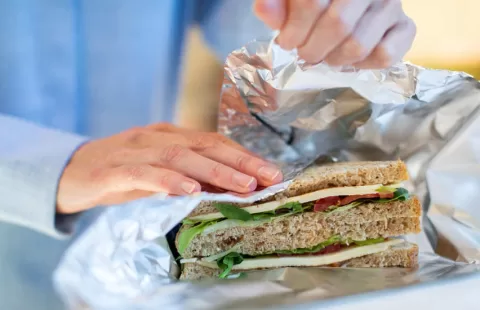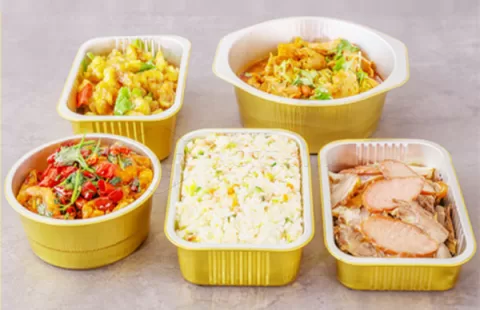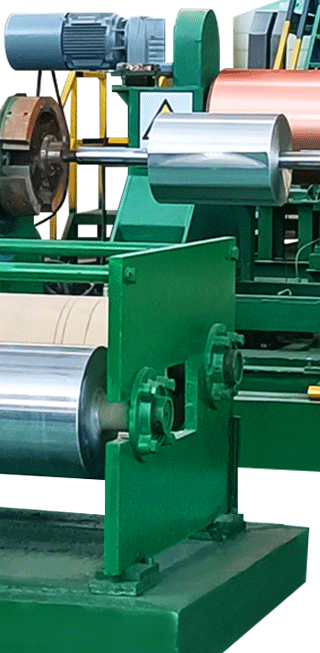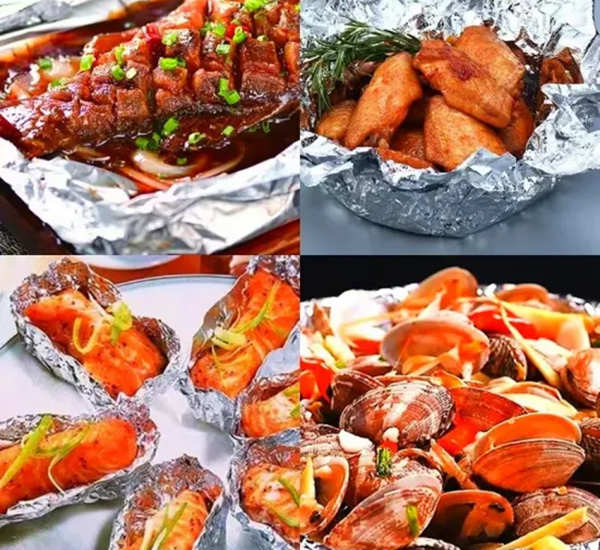
Aluminum Foil:Which Side Should Touch the Food?
Aluminum foil is a staple in most kitchens, serving various purposes from cooking to preserving food. However, there has always been a lingering question: Which side of the aluminum foil should touch the food?
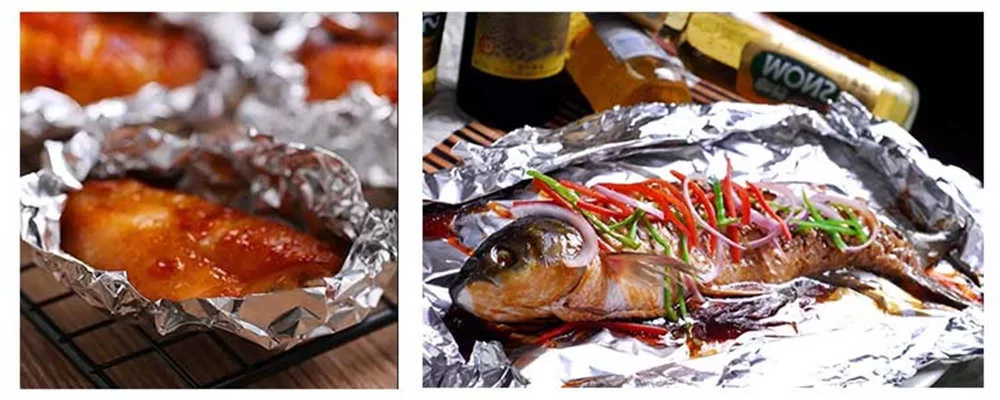
The Two Sides of Aluminum Foil
When you unwrap a roll of aluminum foil, you’ll notice that one side is shiny and reflective, while the other side is dull and matte. Many people believe that the choice of which side to use depends on the intended purpose, but the reality is quite different.

Myth 1: Shiny Side for Cooking, Dull Side for Wrapping
Contrary to popular belief, both sides of aluminum foil are essentially the same. The only reason one side appears shiny is due to the manufacturing process.
- When aluminum is rolled into thin sheets, two layers are created, and the shiny side is the result of coming into contact with the highly polished steel rollers.
- The dull side, on the other hand, is the side that didn’t touch the rollers.
- Therefore, the choice of which side to use has no bearing on the cooking process or food preservation.
Myth 2: Shiny Side Reflects Heat, Dull Side Absorbs Heat
Another misconception is that the shiny side reflects heat.
- It makes suitable for wrapping food to keep it warm, while the dull side is believed to absorb heat, making it better for cooking.
- In reality, aluminum foil is an excellent conductor of heat, and its thickness.
- So minimal that the difference between the two sides is negligible.
- Whether you use the shiny or dull side, the heat will transfer evenly, ensuring your food cooks or stays warm as intended.
The Correct Way to Use Aluminum Foil
Now that we’ve dispelled the myths about which side of aluminum foil to use let’s focus on the correct way to utilize this versatile kitchen tool:
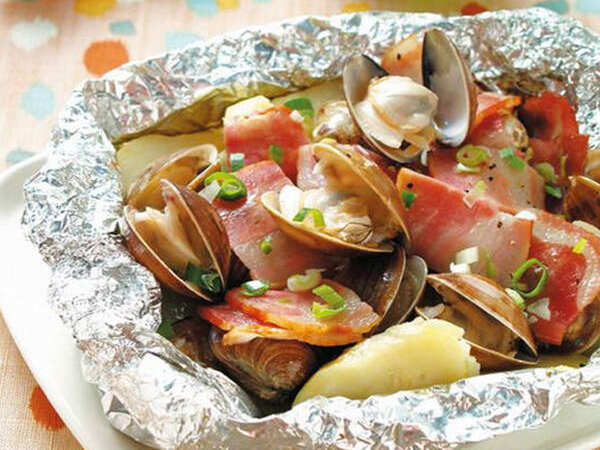
Ensure Proper Wrapping: When wrapping food in aluminum foil for cooking or storing, the key is to create a tight seal. This will help prevent moisture loss and maintain the food’s freshness. Pay more attention to the folding and sealing technique rather than which side is facing in or out.
Use Aluminum Foil Safely: While aluminum foil is safe to use in cooking and food storage, avoid using it with acidic or spicy foods for extended periods. Prolonged exposure to such foods may cause a reaction with the foil, altering the taste of your dishes.
Consider Cooking Techniques: Aluminum foil is incredibly versatile for cooking techniques like grilling, baking, and roasting. Use it to wrap delicate foods like fish or vegetables to prevent them from sticking to the grill or drying out in the oven.
Label Your Packages: When storing food in aluminum foil, consider labeling it with a marker or tape to indicate its contents and date of preparation. This will help you keep track of what’s in your fridge and when it should be consumed.
How To Choose Aluminum Foil Sides?
The debate over which side of aluminum foil should touch the food.
Both sides of aluminum foil are functionally identical, so feel free to use either side for cooking, wrapping, or storing your food.
Remember to prioritize proper wrapping techniques and safe usage to make the most out of this handy kitchen essential.
With these tips in mind, you can confidently use aluminum foil to enhance your cooking and food preservation skills.
Leave a Comment
You must be logged in to post a comment.

